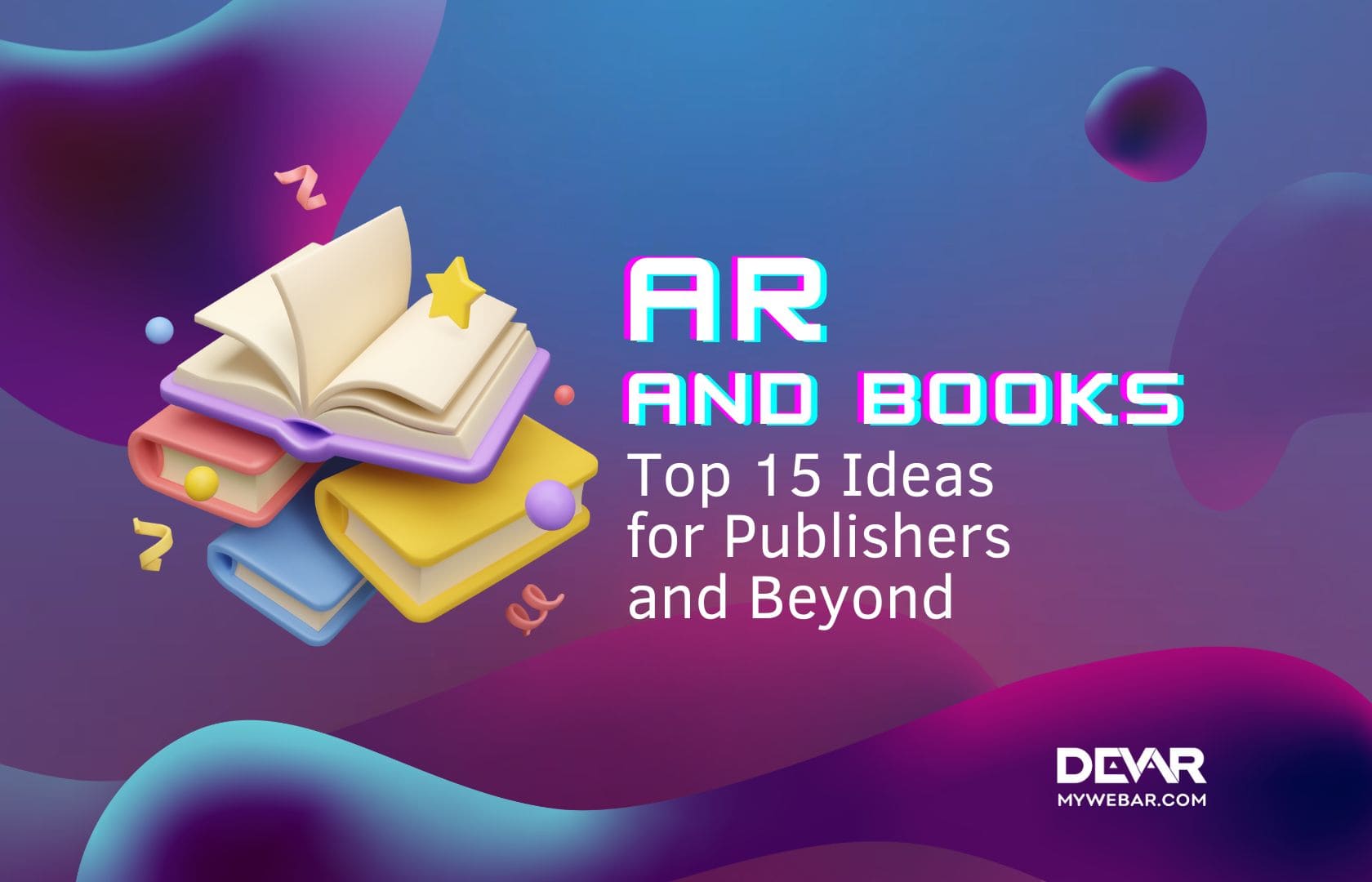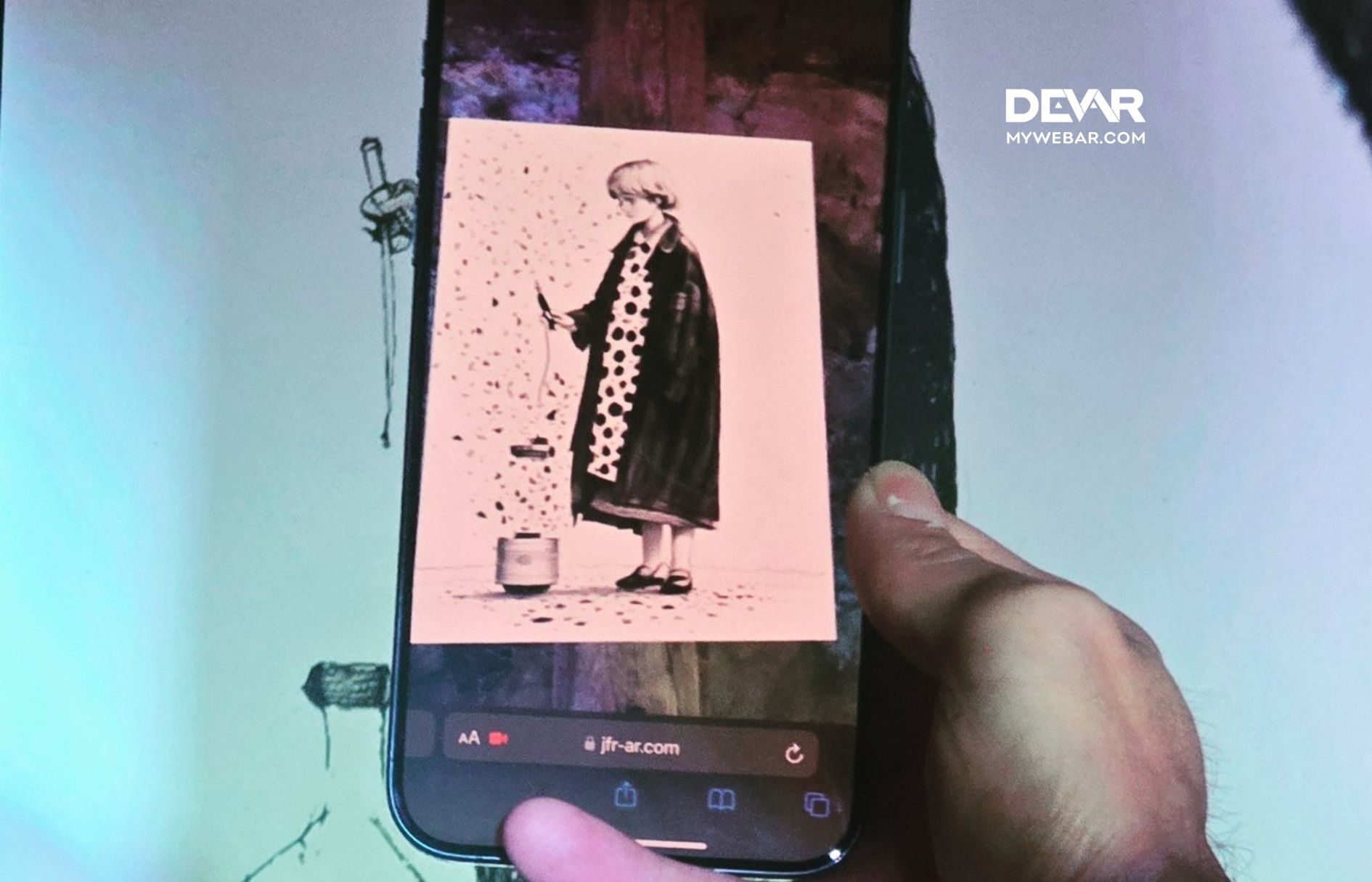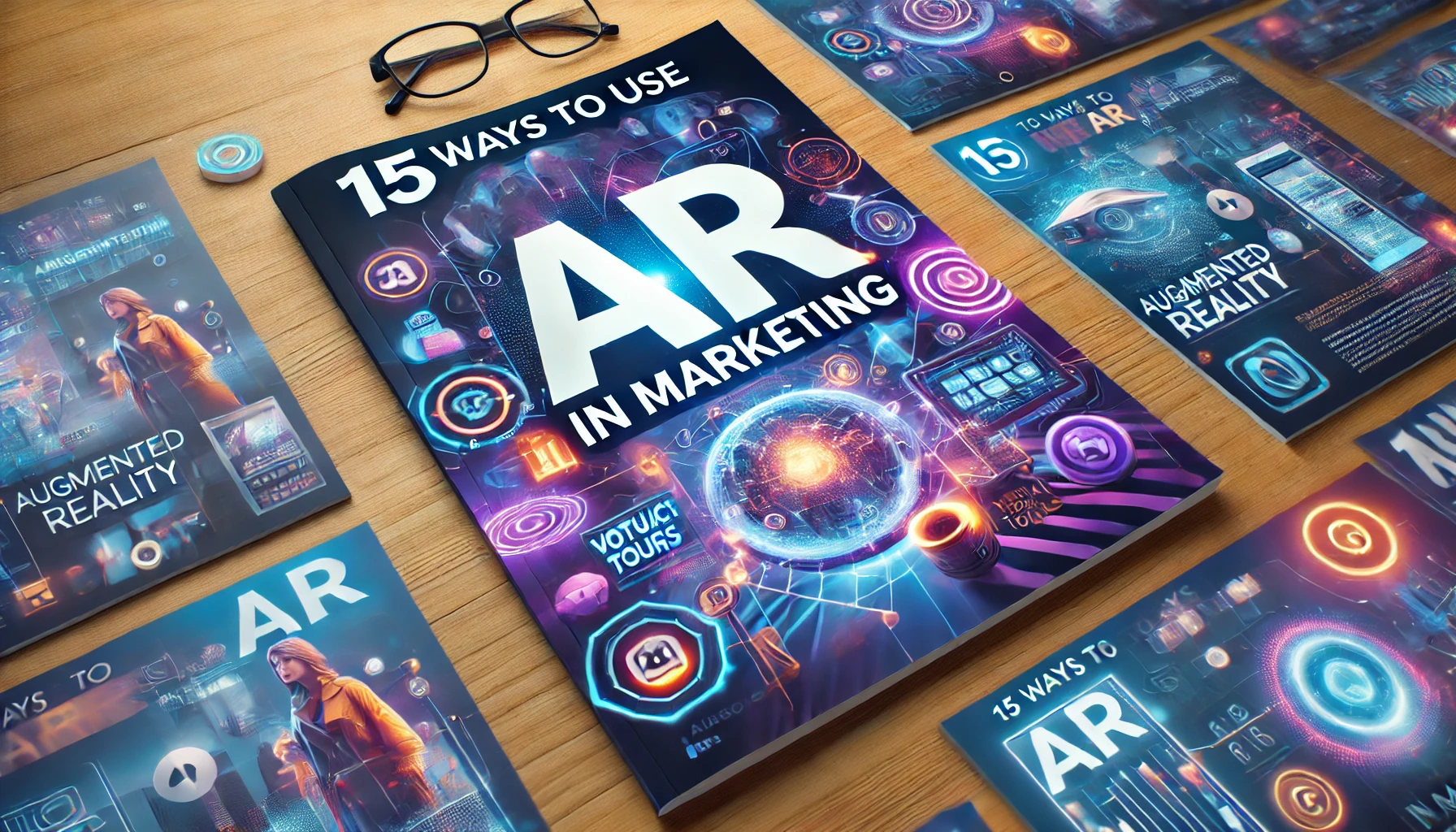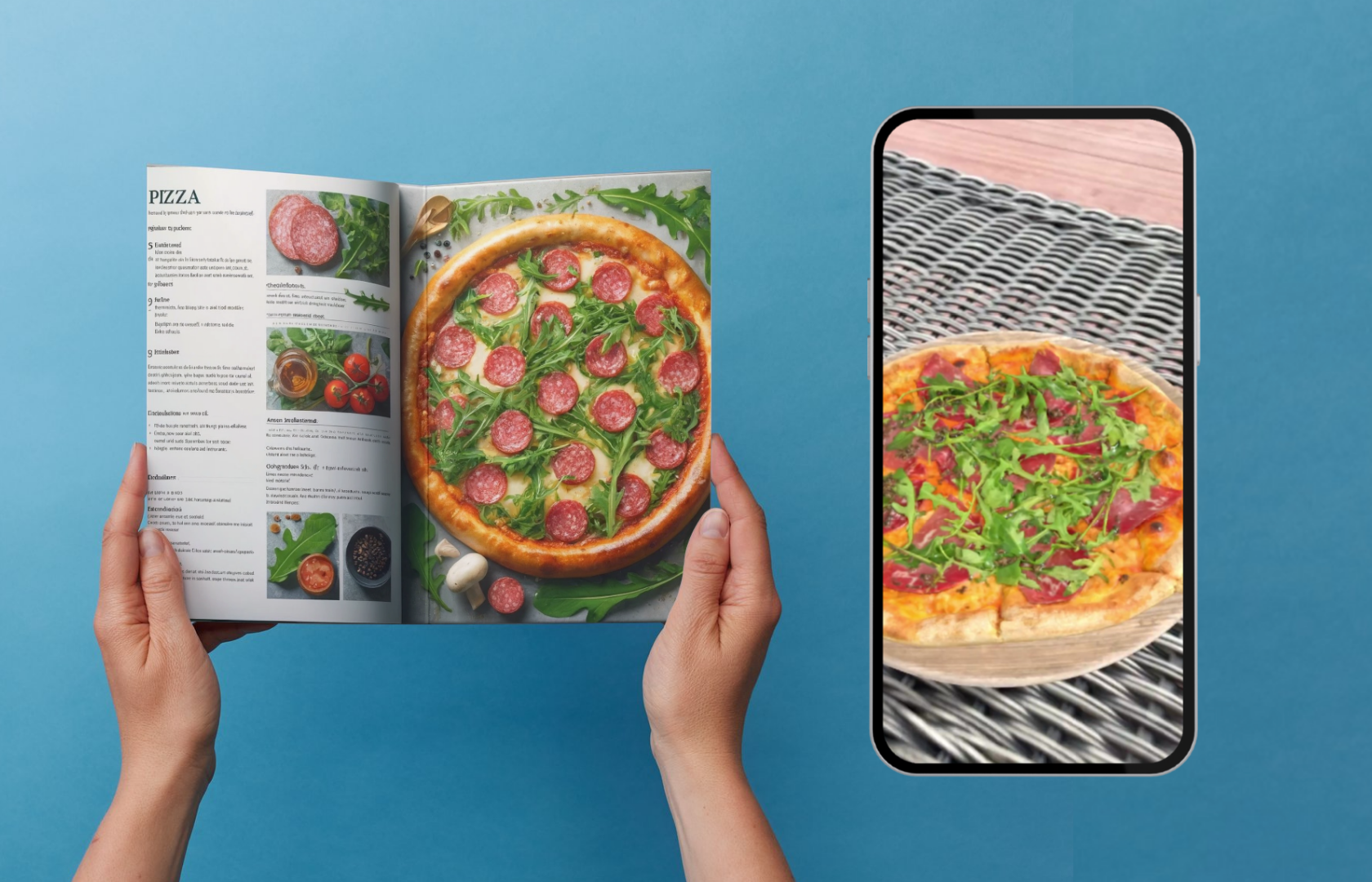Believe it or not, books with augmented reality (AR) not only exist but are also extremely popular. Their circulation exceeds the circulation of other books on similar topics and genres by tens of times.
AR and books (as well as comics, coloring books, postcards, and other printed materials) form a powerful combination that opens up new possibilities for storytelling, learning, and engagement.
Surely each of us has at least once dreamed of a book coming to life. Not in the form of a movie or animation, where the story is already completely invented and visualized for us, but in the form of the same book that still tells us a story, leaving room for our imagination.
Unlike movies or computer games, books give us a unique opportunity to not just be spectators but guests and even participants in the adventures unfolding on their pages. So how can we preserve this important role of books while making them even more magical and technological? In other words, how can we give a book a new life without changing its essence? The answer is simple: using AR in books
We have prepared 15 cool tips and ideas that will change your perception of books and guide you on how to implement augmented reality in publishing, creativity, and education.
Are you ready for amazing discoveries? Then let’s move on to the tips!
Tip 1: The Good Book Starts with an AR Cover
People don’t fall in love with a book based on its cover, but they do choose it precisely because of it.
Traditional book covers often rely on static images or illustrations, but with augmented reality, these covers can come alive. Imagine a fantasy novel with a dragon on the cover that suddenly starts breathing fire or a thriller book with a mysterious figure that moves in response to the reader’s touch. These dynamic and interactive covers instantly grab attention and create a sense of excitement, making them irresistibly cool.
Animated augmented reality book covers take storytelling to a whole new level. They allow readers to interact with the cover itself, providing a glimpse into the narrative before even opening the book. For example, a cover depicting a spaceship can transform into a virtual cockpit, allowing readers to explore the ship’s controls or view a short animated scene from the story.
This interactive element adds depth to the storytelling experience, immersing readers in the world of the book and fostering a stronger connection with the characters and plot.
Learn more about AR covers in one of our articles.
Tip 2: Use the Right Genres for AR Books
Genres define the trends and mood of the book market, and AR amplifies it multiple times.
While augmented reality can enhance any book, certain genres lend themselves particularly well to this technology. For example, children’s books, fantasy novels, and educational texts can be greatly enriched with AR elements.
Children’s books can come to life with interactive characters and animations, while fantasy novels can transport readers into immersive worlds. Educational texts can use AR to provide additional information or interactive quizzes. By selecting the right genres, you can maximize the impact of AR in your books.
Tip 3: Experiment with Content in AR Books
The more experiments you conduct, the more unique and successful discoveries you make. Dare to be bold!
Books with augmented reality offer a fantastic modern concept that allows you to expand the boundaries of how a book is perceived, make it more useful and visual, turn it into a true wonder, and stand out from competitors.
It’s also a creative discovery that gives your book a voice, music, magic, and depth.
Don’t be afraid to experiment with different types of content and tracking. Bring illustrations to life by adding 3D models, videos, animations, and educational games (AR on a Flat Image), or let book characters step into the real world (AR in the Real World). Dress up the reader according to the plot or theme using Masks and Face Filters, or enhance the reading experience by hiding magical QR codes throughout the pages.
Tip 4: Make Reader A Co-Author And Director
Every reader dreams of becoming the hero of the story, so just give them a chance.
Readers will someday be able to create their own avatars and literally go inside a story in order to help develop a character, interact with other readers or characters, share experiences, move through time, compete for prizes, and even influence the plot.
The first steps in this direction have already been taken. In 2021 alone, digital strategies with AR and gaming experiences helped generate billions in revenue. Examples include a role-playing game created by American Eagle where people can digitally explore their Members Always Club in Roblox, as well as NBA 2K’s in-game NFT and virtual store.
Well, if people enjoy it so much, why deny them the pleasure, right?
Tip 5: Transform AR Books to AR Portals
Think time travel and space exploration are only possible in fictional stories? Hehe… how about AR?
AR portals allow readers to explore virtual environments, interact with characters, access additional information, and engage in educational and entertaining experiences. It revolutionizes the way we perceive and interact with books, creating a dynamic and captivating reading experience.
Books can become portals and bring together museums, libraries, research clubs, and educational institutions. The combination of AR and publishing creates endless ideas for collaboration. Just imagine: you can hold an encyclopedia about dinosaurs in your hands, take a tour of the Zigong Dinosaur Museum in China, and then explore the famous Dinosaur National Monument park in Utah and Colorado all through one book.
It sounds simply amazing, doesn’t it? And think about the incredible opportunities it opens up for collaborations, research, and entertainment! Read more in our article about whether new technologies will change publishing.
Tip 6: Provide Clear Instructions for AR
Underestimate the power and impact of a good and engaging instruction. So many problems could be avoided if people would carefully read them…
To ensure readers can easily access and engage with the AR content, provide clear instructions on how to use it. This can be done through a brief introduction at the beginning of the book, step-by-step guides, or even tutorial videos. Clear instructions will help readers navigate the AR features seamlessly and fully enjoy the enhanced experience.
Tip 7: Enhance the Storytelling Experience
The magic of a book unfolds only when the reader fully immerses themselves in its narrative.
AR should be used to enhance the storytelling experience rather than overshadowing it. Consider how AR can add depth and engagement to the narrative so that readers can obtain a more immersive and captivating reading experience.
For instance, instead of merely displaying static images, use AR to create dynamic scenes, interactive elements, 3D models, augmented information, and incorporate sound effects or narration. By doing so, the storytelling experience can be enhanced and made more engaging. Remember that our main goal is to complement the narrative and captivate readers, allowing them to fully immerse themselves in the world of the book.
Tip 8: Personalized Reading Experience
Who wouldn’t appreciate a personalized approach? After all, the whole world is just your personal story.
AR has the potential to transform the reading experience by adapting content based on reader interactions and providing a customized and engaging journey through the book.
By tracking the reader’s movements, gestures, or even eye gaze, AR can dynamically respond and tailor the content to their preferences and engagement levels. This level of personalization creates a unique and customized journey through the book, making it more engaging and immersive.
One way AR can enhance the reading experience is by offering additional layers of information or context. For example, while reading a historical novel, AR can overlay historical facts, maps, or images on top of the text, providing readers with a deeper understanding of the time period or events being described. This added information not only enriches the reading experience but also encourages readers to actively explore and learn beyond the boundaries of the book
Tip 9: Bring Characters to Life
Do you think that communicating with books is just a beautiful metaphor? Not anymore 🙂
AR opens up exciting opportunities for readers to explore and engage with literary worlds in ways that were previously unimaginable. For example, this technology enables readers to interact with characters from books, creating a more immersive and interactive reading experience. The ability to engage in conversations, collaborate in storytelling, and influence the plot adds a new dimension to the relationship between readers and characters.
Imagine being able to have a conversation with a character from a book, asking them questions or hearing their thoughts on certain topics. AR can bring characters to life in a way that goes beyond the limitations of traditional text. By using voice recognition or chatbot technology, readers can engage in realistic and dynamic conversations with these virtual characters, making the reading experience more dynamic and memorable.
Furthermore, AR can allow readers to engage in collaborative storytelling with characters. They can participate in quests, solve puzzles, or make choices that impact the story’s outcome. This level of interaction not only enhances the reading experience but also promotes creativity and critical thinking skills. Readers become active participants in the narrative, co-creating the story alongside the characters.
Tip 10: Games? AR Games!
We explore the world through games. That’s how our brain and consciousness are structured. And it’s much more enjoyable, isn’t it?
By integrating AR games into books, publishers and authors can captivate readers in new and innovative ways, making the reading experience more immersive and enjoyable.
AR games can transform a book into an interactive adventure. By scanning specific pages or images, readers can unlock hidden puzzles, challenges, or quests within the book. These games encourage active participation, problem-solving, and critical thinking, making the reading experience more engaging and enjoyable. For example, a mystery novel might include a hidden object game within its pages, where readers must search for clues using AR to advance the story.
Moreover, AR games can extend the narrative beyond the confines of the book. By overlaying virtual elements onto the physical world, readers can experience the story environment in a more immersive way. For instance, a fantasy novel could have an AR game that allows readers to explore a virtual map of the story’s world, interact with characters, or even engage in virtual battles. This expands the reader’s connection to the story and enhances their understanding of the fictional universe.
Lastly, AR games in books can foster collaboration and social interaction. Readers can compete with friends or join forces to solve challenges within the book. This not only adds a social element to the reading experience but also encourages teamwork and communication skills.
Tip 11: Use the Multiscene Option!
Seriously, it’s a super useful feature. And we will talk about it in every article 🙂
The Multiscene option allows for the creation of multiple scenes within a single WebAR experience. Put simply, it enables you to group projects created on the DEVAR (MyWebAR) platform so that users can interact with them simultaneously.
With just one QR code scan, users can point their device’s camera at various markers and view different scenes without having to reload the browser page or activate each scene individually. The Multiscene option is great for creating AR books.
Tip 12: Do not be Afraid to Use AI
Technologies are not scary! Moreover, they save time for analysis and creativity. Only advantages.
Artificial intelligence plays a crucial role in generating and assisting in the creation of content for books. AI algorithms can analyze vast amounts of data, extract relevant information, and generate written content.
For instance, an AI-powered system can automatically summarize a book or generate explanations based on specific topics or genres. This capability is valuable for authors, publishers, and educators, saving time and effort in content creation while providing more diverse and personalized reading materials.
And do not forget that AI is an excellent tool for generating ideas and concepts for AR projects.
Tip 13: Use AR as a Powerful Analytical Tool
Augmented reality can be used not only as a WOW factor. This technology has plenty of cool features up its sleeve!
Imagine that you have created a book about dinosaurs. By incorporating augmented reality, you can not only amaze readers and provide them with a fully immersive experience, but also gather data on the number of scans for each specific page, as well as the average time readers spend in each AR scene.
This way, you can find out which characters, games, or types of interactions users like the most. And you can create your next book taking this information into account.
Tip 14: Create a Unified Product
Any product, especially a book, should always remain a cohesive entity and be perceived as a whole. This is its strength!
Don’t get carried away with separation. Remember that the key success of a book with AR lies in the physical and digital parts complementing each other, coming together as a unified product. Don’t create AR just for the sake of AR or a game just for the sake of a game. Only when all the components of your product blend seamlessly, you’ll have a cool and cohesive product that will surely impress readers.
Seamless integration of AR is key to ensuring a smooth reading experience. Avoid abrupt transitions between the physical book and the AR content. The AR elements should seamlessly blend with the printed text and illustrations. Use markers or triggers within the book to activate the AR content, ensuring that readers can easily access and engage with it.
Remember, while AR can enhance a book, it should not overshadow the core reading experience. Strive to strike a balance between the physical book and the AR elements, creating a harmonious blend that adds value to the overall reading experience.
Tip 15: And don’t Forget about Retargeting!
Some stories can be read again and again. But it’s even better in a new rendition.
To gather information about your customers, you can always utilize the Marketing Tools extension. It provides you with the ability to add social media pixels to not only websites but also AR projects. This allows you to communicate with your target audience more efficiently.
When users visit a website, they typically expect some form of advertising. However, with an AR experience, users may be unaware of the advertising. By placing a pixel in an AR scene on a specific product, such as a book, you can obtain information about the user who purchased the product and the people they shared the book with. This data opens up fascinating possibilities.
By leveraging the Marketing Tools extension, you can gain a better understanding of your audience and enhance the effectiveness of your targeted ads. After all, having read one book, many are eager to find something similar. Isn’t this an opportunity for you to seize?
What’s Next?
No matter what sector of the book industry you are engaged in, whether it’s publishing, book sales, or the creative process itself, it’s crucial to recognize the immense potential of augmented reality.
For publishers, integrating augmented reality into books can offer a unique selling point and a competitive edge in the market. By incorporating interactive AR elements, publishers can provide readers with a more immersive and engaging reading experience.
Similarly, for authors and creators, augmented reality provides a platform for pushing the boundaries of creativity. It allows for the integration of multimedia elements, such as 3D animations, sound effects, or interactive features, to enhance the narrative and bring it to life in ways that were previously unimaginable. By leveraging augmented reality, authors can deliver their stories in more dynamic and memorable ways, fostering deeper connections with their readers and expanding the possibilities of storytelling.
In summary, augmented reality is a powerful tool that can elevate the publishing industry, revolutionize the reading experience, and unlock new levels of creativity.
Try implementing one of our tips right now! Just start your journey into augmented reality!




















